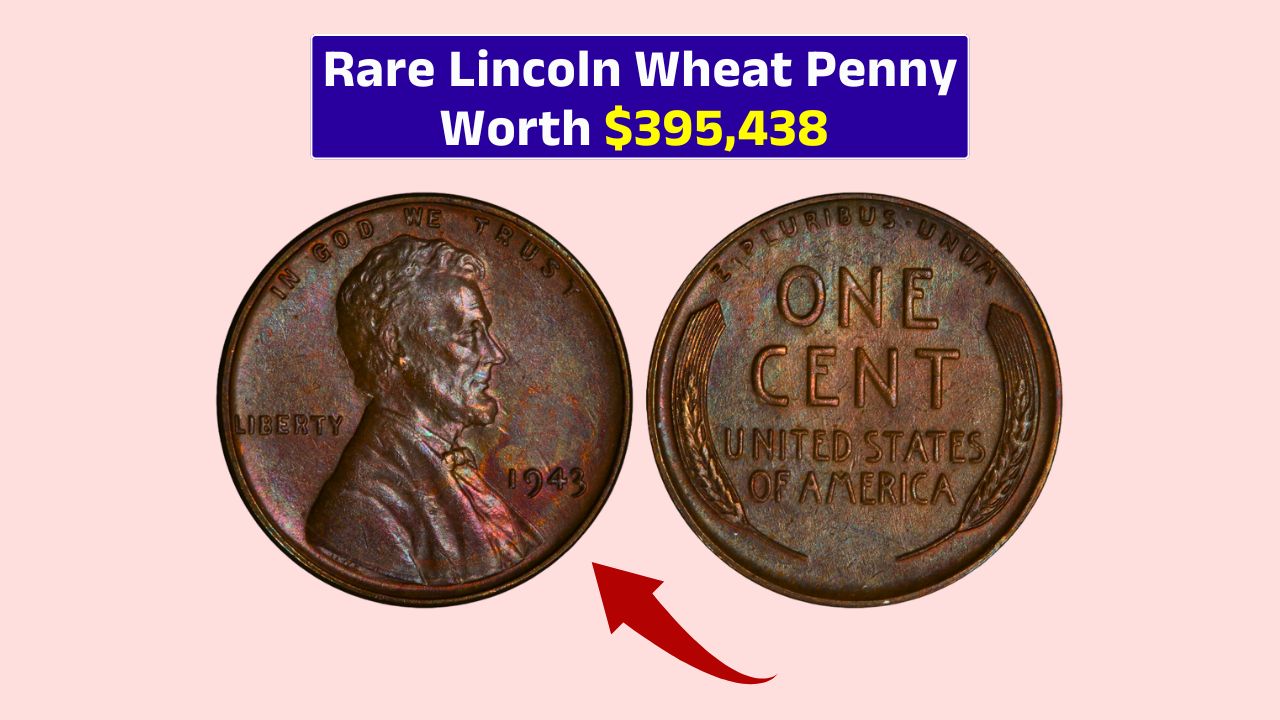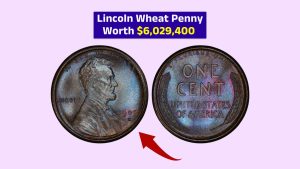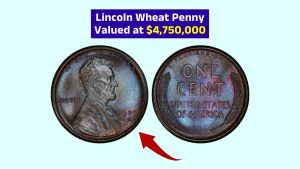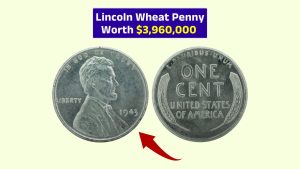Sometimes, the most valuable things are hiding in plain sight — even in your loose change. That’s exactly the case with a special kind of one-cent coin called the Lincoln Wheat Penny.
One rare version of this humble penny recently sold for a staggering $395,438! Even more surprising? You might be carrying one in your pocket right now without even realizing it.
Origins
The Lincoln Wheat Penny made its debut in 1909 to honor Abraham Lincoln’s 100th birthday. It was actually the first U.S. coin to feature a real person’s face. Lincoln’s portrait graces the front, while two simple stalks of wheat decorate the back, giving the coin its iconic name.
This design lasted until 1958, and while billions were minted, a few rare versions ended up being incredibly valuable thanks to minting mistakes and limited runs.
Rarity
So, what makes a single penny sell for $395,438? The answer lies in a tiny error during World War II. In 1943, due to a shortage of copper, the U.S. Mint began producing pennies out of steel.
But somehow, a few copper blanks slipped through the cracks — and boom, a legendary mistake was born.
Only a handful of these 1943 copper Wheat Pennies exist, and one of them fetched that sky-high price at auction.
Value
Not every Wheat Penny is worth a fortune, but here’s what makes the rare ones stand out.
First, rarity plays a huge role. The fewer that exist, the higher the value. Condition is also key. Clean, well-preserved coins with sharp details are worth much more than worn ones. Then there’s the minting error itself.
Coins that have unusual mistakes like the 1943 copper mix-up are like gold to collectors. Finally, historical context matters. Coins made during significant periods, like World War II, carry more meaning and demand.
Here’s a quick snapshot:
| Factor | Impact on Value |
|---|---|
| Year (e.g., 1943) | Crucial for rarity |
| Material (Copper) | Much rarer than steel |
| Mint Mark (“D” or “S”) | Some mints made fewer coins |
| Coin Condition | Pristine coins = $$$ |
Clues
Not sure if your penny is special? Here’s how to check.
Start with the date. If you find a 1943 penny that looks brown or coppery, that might be a rare one.
Next, do a magnet test. Steel sticks to magnets, but copper doesn’t. So if your 1943 penny doesn’t stick to a magnet, it could be one of the rare copper versions. Check for mint marks too.
Look under the year for a letter like “D” or “S” — pennies from certain mints were produced in smaller numbers. Lastly, don’t clean it. Cleaning might seem helpful, but it can actually ruin the coin’s value.
Odds
Still wondering if it’s even possible to find one? Believe it or not, people have discovered rare Wheat Pennies in jars of old coins, pocket change, and even after shopping trips. They’re still out there — it just takes a sharp eye and a little luck.
Action
Think you’ve found a gem? Here’s what to do next.
Do not clean it. Keep it in a dry, protected place. Then, get it checked by a professional grading service or a trusted coin dealer. If it turns out to be the real deal, you can choose to keep it as a piece of history or sell it through a reputable auction house.
The Lincoln Wheat Penny is more than just a coin — it’s a tiny time capsule with the potential to change your day (or your bank account). With one already sold for over $395,000, there could still be a few out there hiding in change jars, drawers, or even pockets.
So next time you’re counting your coins, keep an eye out. That rusty penny might just be your golden ticket.
FAQs
What year is the rare Wheat Penny?
The rarest is the 1943 copper version.
How can I test a 1943 penny?
Try the magnet test — copper won’t stick.
Can I clean a rare penny?
No, cleaning can reduce its value significantly.
Where to sell a rare penny?
Use auctions or certified coin dealers.
How many 1943 copper pennies exist?
Only about 20 are known to exist.



